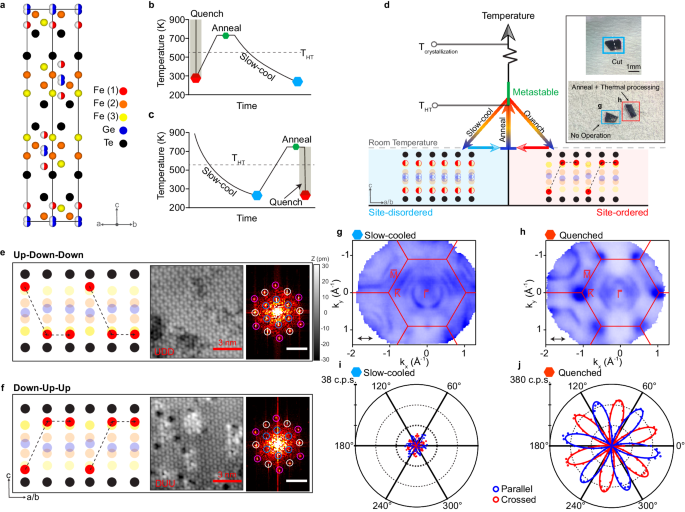2024-04-05 ライス大学
<関連情報>
- https://news.rice.edu/news/2024/discovery-points-path-flash-memory-storing-qubits
- https://www.nature.com/articles/s41467-024-46862-z
室温に近いファンデルワールス強磁性体における可逆的な不揮発性電子スイッチング Reversible non-volatile electronic switching in a near-room-temperature van der Waals ferromagnet
Han Wu,Lei Chen,Paul Malinowski,Bo Gyu Jang,Qinwen Deng,Kirsty Scott,Jianwei Huang,Jacob P. C. Ruff,Yu He,Xiang Chen,Chaowei Hu,Ziqin Yue,Ji Seop Oh,Xiaokun Teng,Yucheng Guo,Mason Klemm,Chuqiao Shi,Yue Shi,Chandan Setty,Tyler Werner,Makoto Hashimoto,Donghui Lu,Turgut Yilmaz,Elio Vescovo,… Ming Yi
Nature Communications Published:28 March 2024
DOI:https://doi.org/10.1038/s41467-024-46862-z

Abstract
Non-volatile phase-change memory devices utilize local heating to toggle between crystalline and amorphous states with distinct electrical properties. Expanding on this kind of switching to two topologically distinct phases requires controlled non-volatile switching between two crystalline phases with distinct symmetries. Here, we report the observation of reversible and non-volatile switching between two stable and closely related crystal structures, with remarkably distinct electronic structures, in the near-room-temperature van der Waals ferromagnet Fe5−δGeTe2. We show that the switching is enabled by the ordering and disordering of Fe site vacancies that results in distinct crystalline symmetries of the two phases, which can be controlled by a thermal annealing and quenching method. The two phases are distinguished by the presence of topological nodal lines due to the preserved global inversion symmetry in the site-disordered phase, flat bands resulting from quantum destructive interference on a bipartite lattice, and broken inversion symmetry in the site-ordered phase.



